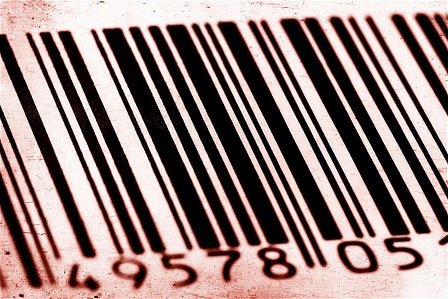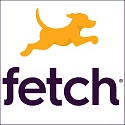
A deadline that the retail and coupon industries have been working toward for years is finally here – meaning that everything, or nothing, about the coupons you use regularly is going to change overnight.
Today, June 30th, marks the last official day that old-style UPC bar codes are to appear on coupons. From now on, only the longer, more complex GS1 DataBar codes that you’ve likely grown accustomed to seeing, are to be used.
So if you have older coupons in your stash with UPC or even no bar codes, better use them fast – before a strict store or confused cashier suddenly starts treating them like the coupon equivalent of Confederate money.
Officially, UPC bar codes “will no longer be reserved or recognized as a valid coupon identifier,” Angela Fernandez, Vice President of Retail Grocery and Foodservice for GS1 US, told Coupons in the News. GS1 administers the DataBar system and has spearheaded the bar code transition, along with several industry groups, which together comprise the Joint Industry Coupon Committee (JICC).
The new bar codes are meant to be beneficial for retailers, manufacturers and, in theory, coupon users. But the official transition raises at least a couple of concerns for couponers – will the presence of UPC bar codes make older coupons instantly invalid, and will the new bar codes turn cashiers into coupon-rejecting automatons?
And what was wrong with the old bar codes anyway?
Bar codes on coupons date back to as early as 1973, but they didn’t come into common usage until the mid-80’s. And their impact on couponing was revolutionary – with more grocery stores using electronic scanners by that point, cashiers could now scan your coupons along with your purchases, instead of stopping to manually subtract each one.
But “couponing… became a victim of the UPC’s success,” scanner manufacturer NCR wrote in an industry guide to the DataBar. “Coupons were never part of the original intention for UPC bar code technology,” so bar codes were running out of digits. And the UPC bar code could contain only limited information anyway – which, among other problems, give rise to coupon “decoders” who learned to read the bar codes and figure out what products they would “work” on, if an inattentive cashier scanned the coupons without even looking at them.
The DataBar is meant to change all that. The new, longer bar codes contain much more information, can be better matched to the actual products the coupons are meant for, and can be coded for more complex purchase requirements, like “buy one of product A and two of product B, and get $1 off product C”. “A cashier will not be able to manually enter promotions of this complexity,” the NCR guide warned, so the absence of the DataBar would “increase the temptation for cashiers to give products away in an attempt to please the customer and speed the checkout process.”
Cashiers giving products away because they can’t figure out how to deduct your coupons? In what store does this happen, so we can all start shopping there??
In reality, what happens can be quite the opposite. The advent of the DataBar means more cashiers are refusing more coupons altogether – sometimes properly, sometimes not. Some retailers have enough faith in the DataBar, that they’ve adopted a “if it doesn’t scan, we can’t accept it” policy when it comes to coupons. If the scanner rejects your coupon for any reason, even if it’s a match for the product you’re purchasing, some cashiers are instructed to hand it back to you. The DataBar is meant to reduce or eliminate the need for any cashier intervention – it’s designed to be so precise, that if the coupon beeps, it must not be a match, so there’s no need for the cashier to even look at it. All the better to guarantee a speedy checkout.
But while the DataBar is an improvement, it isn’t infallible. Some critics, such as the creators of the QSeer coupon app, claim a large percentage of coupon DataBars are still rife with errors that cause coupons to be incorrectly rejected at the checkout. That inspired them to create QSeer, which was meant to inform shoppers “how each coupon is going to be interpreted by the computer and whether a coupon will be accepted.” At the same time, however, it’s enabled a new generation of coupon decoders to exploit errors and ambiguities in the DataBar codes to their own advantage.
But any debate about whether DataBars are ready for prime time is over. After several pushed-back deadlines that began in 2010, the JICC last year issued today’s final, drop-dead date for the bar code transition. “Most of the change has already occurred,” Fernandez said. “All you need to do is look in your newspaper. Most coupons only carry the GS1 DataBar barcode today.”
Many manufacturers made the transition well before the deadline. And over the past year, stragglers like Bayer, Dial, Pinnacle Foods and Prestige Brands finally quit printing UPC codes on their coupons. Today, along with several smaller brands, Mondelez is the only major manufacturer that still prints UPC bar codes alongside DataBars on its coupons. The company did not respond to a request for comment about when it planned to acquiesce to the JICC’s deadline.
The deadline was also aimed at retailers, as the JICC urged them to ensure they had the capability to scan DataBars. And for some, the transition is still a work in progress. “Approximately 80% of retailers can accept and process GS1 DataBar coupons — if not fully, at least in part,” GS1 US Global Standards Director Raymond Delnicki told Coupons in the News.
But what about retailers that are capable of scanning DataBars, and may take the UPC retirement literally? “We have not heard of any retailers who will refuse UPC coupons after the deadline,” Fernandez said. “Retailers appear to be adding the GS1 DataBar capability for coupons, with no immediate plans to turn off UPC capability, so as not to sour the customer experience for those few UPC coupons they encounter,” Delnicki added. That’s not to say they won’t refuse older, no-expiration-date coupons eventually, but at least it’s not likely to happen right away.
If nothing else, today’s formal changeover officially brings to an end a sometimes awkward transition period, in which coupons contained both types of bar codes side by side, and they sometimes didn’t scan unless your cashier covered one of the bar codes and slid it over the scanner just right. So today’s coupons are meant to be better than those transitional coupons, and way better than coupons were before.
And given that this transition was some 30 years in the making, the switch to an even newer system should be getting under way… any day now.
Photo by jDevaun.Photography











It would have been nice to have notified consumers about this change beforehand. I have lots of coupons for free items that I will not be able to use due to this change.This is a very sneaky move geared towards consumers. This is just another way to get more money out of consumers due to the fact that it will be harder to use coupons. Nothing ever changes for the benefit of the consumers, it is always to the benefit to corporations.
You do realize the coupon is our benefit? The companies do not have to offer them at all ….